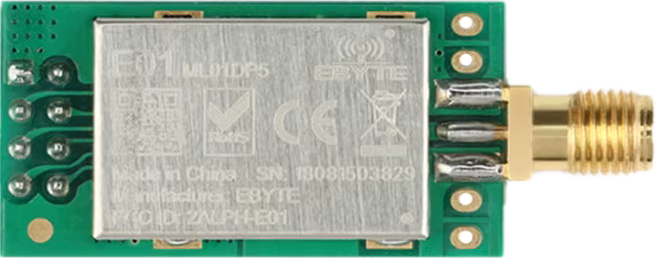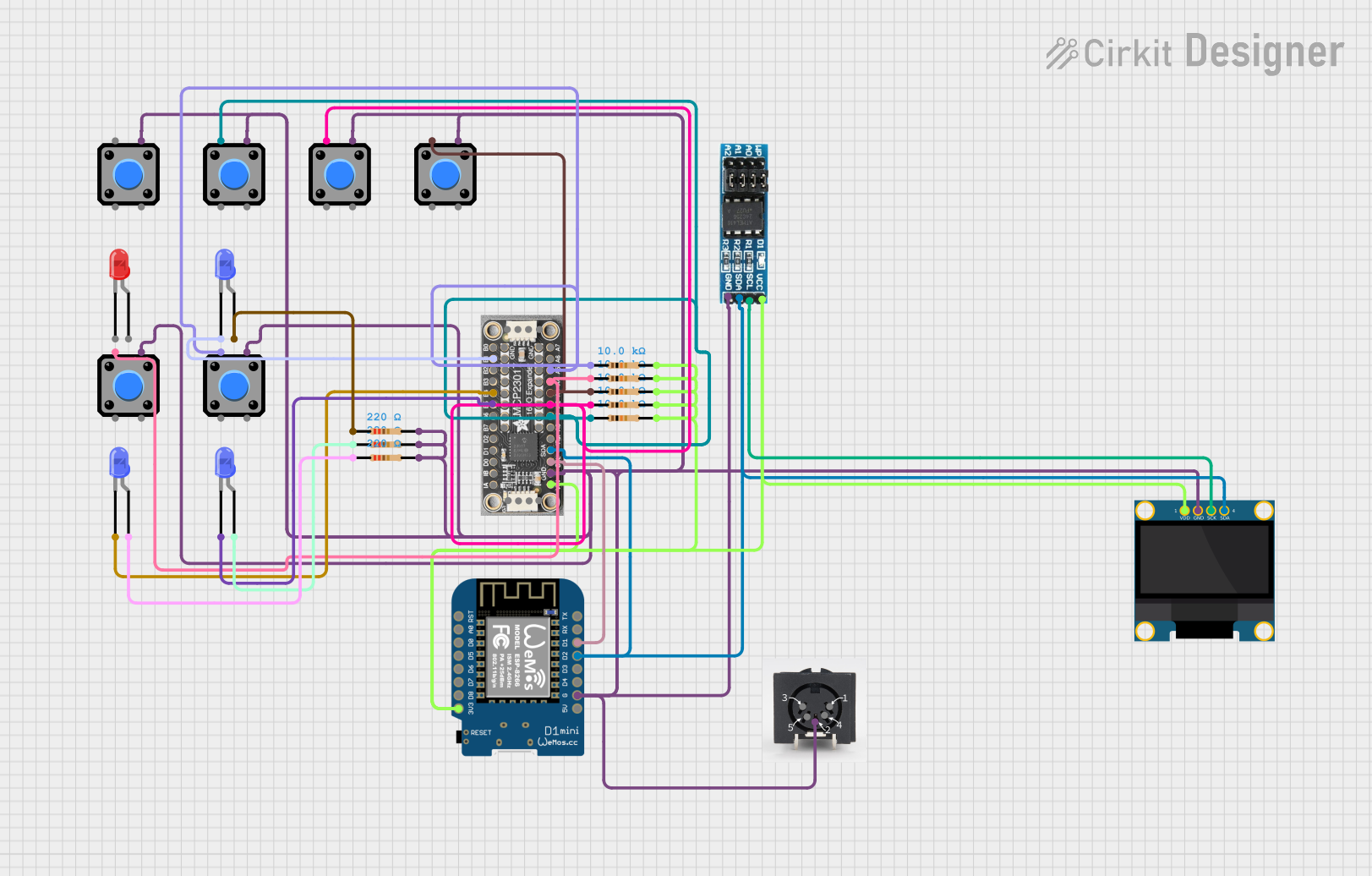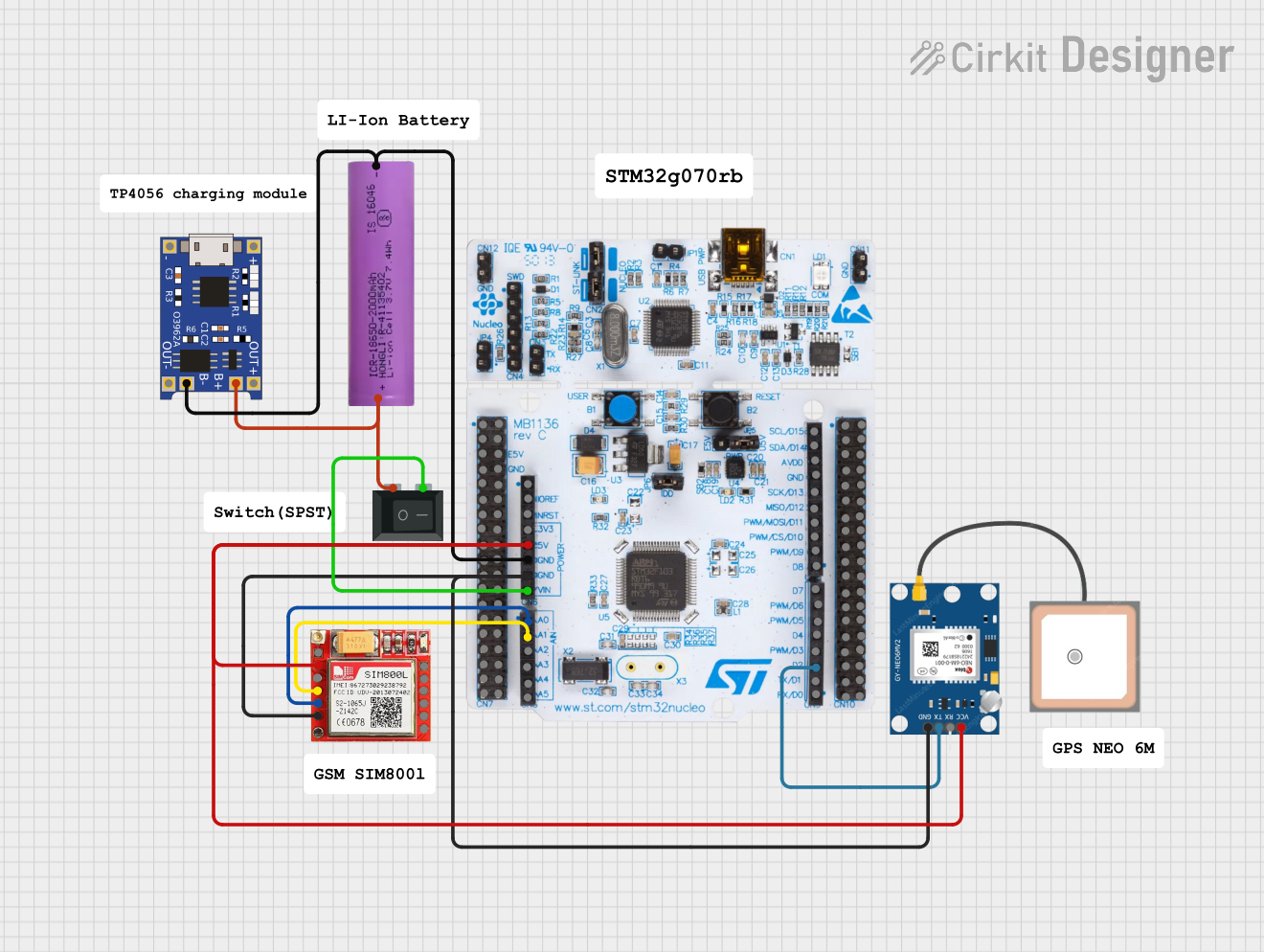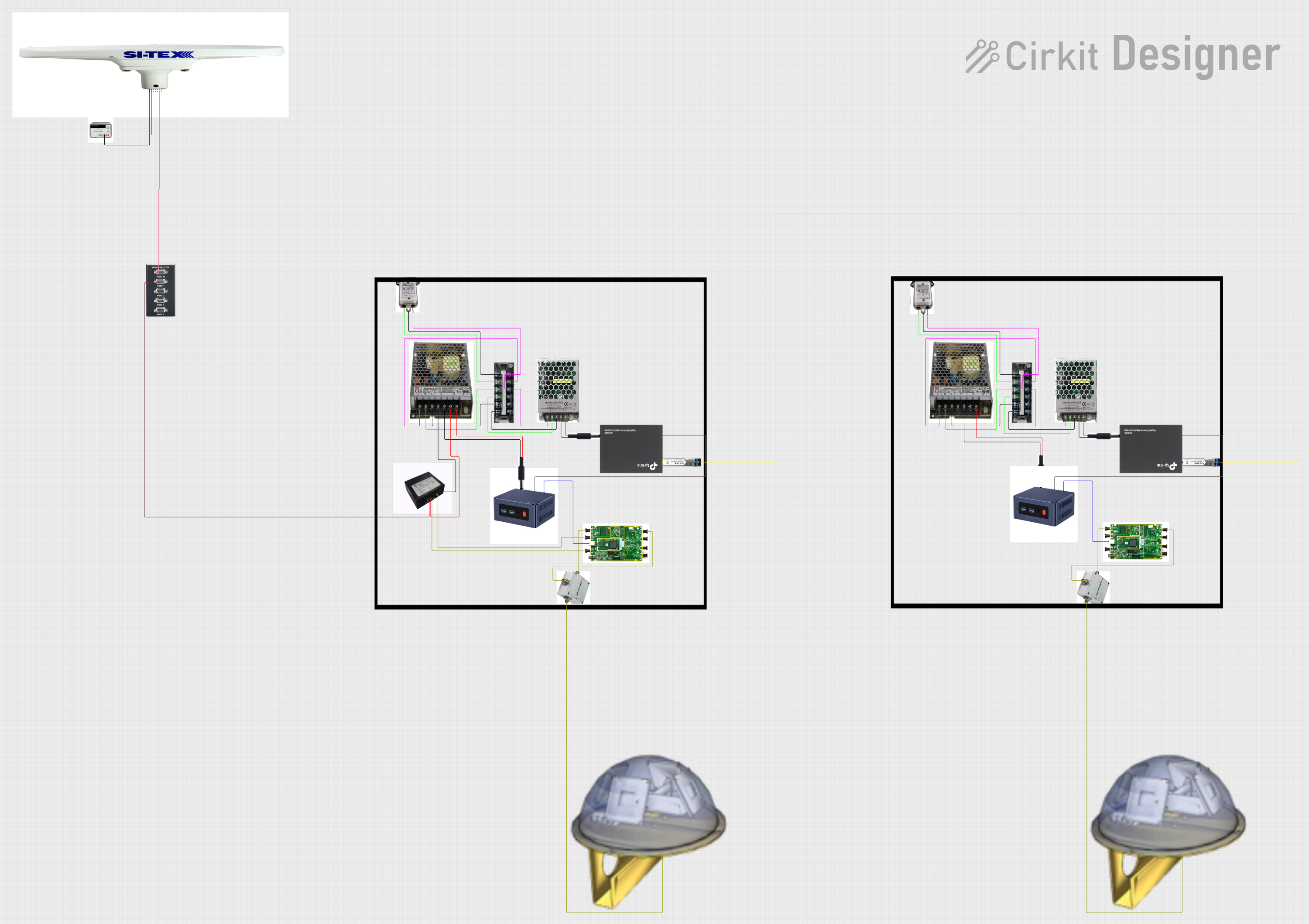
How to Use EBYTE E01-2G4M27D: Examples, Pinouts, and Specs

 Design with EBYTE E01-2G4M27D in Cirkit Designer
Design with EBYTE E01-2G4M27D in Cirkit DesignerIntroduction
The EBYTE E01-2G4M27D is a low-power, long-range wireless transceiver module operating in the 2.4GHz frequency band. Designed for IoT applications, this module features a compact design, high sensitivity, and reliable communication capabilities. It is based on the Nordic nRF24L01+ chip, making it ideal for applications requiring robust wireless communication with minimal power consumption.
Explore Projects Built with EBYTE E01-2G4M27D

 Open Project in Cirkit Designer
Open Project in Cirkit Designer
 Open Project in Cirkit Designer
Open Project in Cirkit Designer
 Open Project in Cirkit Designer
Open Project in Cirkit Designer
 Open Project in Cirkit Designer
Open Project in Cirkit DesignerExplore Projects Built with EBYTE E01-2G4M27D

 Open Project in Cirkit Designer
Open Project in Cirkit Designer
 Open Project in Cirkit Designer
Open Project in Cirkit Designer
 Open Project in Cirkit Designer
Open Project in Cirkit Designer
 Open Project in Cirkit Designer
Open Project in Cirkit DesignerCommon Applications and Use Cases
- Smart home devices and automation
- Industrial wireless control systems
- Wireless sensor networks
- Remote monitoring and telemetry
- Internet of Things (IoT) applications
- Wireless data transmission in robotics
Technical Specifications
The EBYTE E01-2G4M27D module is designed to deliver reliable performance in a variety of wireless communication scenarios. Below are its key technical specifications:
| Parameter | Value |
|---|---|
| Operating Frequency | 2.4GHz ISM band |
| Modulation Method | GFSK |
| Maximum Transmit Power | 27dBm |
| Sensitivity | -102dBm |
| Communication Distance | Up to 3,000 meters (line of sight) |
| Supply Voltage | 1.9V to 3.6V |
| Operating Current | 45mA (transmit), 13.5mA (receive) |
| Sleep Current | < 1µA |
| Data Rate | 250kbps, 1Mbps, 2Mbps |
| Antenna Interface | IPEX connector |
| Dimensions | 15mm x 28mm x 2.5mm |
| Operating Temperature | -40°C to +85°C |
Pin Configuration and Descriptions
The E01-2G4M27D module has 8 pins, as described in the table below:
| Pin Number | Pin Name | Description |
|---|---|---|
| 1 | GND | Ground connection |
| 2 | VCC | Power supply (1.9V to 3.6V) |
| 3 | CE | Chip Enable: Controls data transmission/reception |
| 4 | CSN | Chip Select: SPI interface control |
| 5 | SCK | Serial Clock: SPI clock input |
| 6 | MOSI | Master Out Slave In: SPI data input |
| 7 | MISO | Master In Slave Out: SPI data output |
| 8 | IRQ | Interrupt Request: Indicates data transmission/reception status |
Usage Instructions
How to Use the E01-2G4M27D in a Circuit
- Power Supply: Connect the VCC pin to a regulated power source (1.9V to 3.6V) and the GND pin to ground.
- SPI Interface: Connect the SPI pins (CSN, SCK, MOSI, MISO) to the corresponding SPI pins on your microcontroller.
- Control Pins:
- Use the CE pin to toggle between transmit and receive modes.
- Monitor the IRQ pin for interrupt signals indicating data transmission or reception events.
- Antenna: Attach an external antenna to the IPEX connector for optimal signal strength and range.
Important Considerations and Best Practices
- Power Supply: Ensure a stable and noise-free power supply to avoid communication errors.
- Antenna Placement: Position the antenna away from metal objects and other sources of interference for maximum range.
- SPI Configuration: Configure the SPI interface on your microcontroller to match the module's settings (e.g., clock polarity and phase).
- Operating Environment: Avoid using the module in environments with excessive RF interference or extreme temperatures.
Example: Connecting to an Arduino UNO
Below is an example of how to connect the E01-2G4M27D to an Arduino UNO and send data wirelessly.
Wiring Diagram
| E01-2G4M27D Pin | Arduino UNO Pin |
|---|---|
| GND | GND |
| VCC | 3.3V |
| CE | Pin 9 |
| CSN | Pin 10 |
| SCK | Pin 13 |
| MOSI | Pin 11 |
| MISO | Pin 12 |
| IRQ | Not connected |
Arduino Code Example
#include <SPI.h>
#include <nRF24L01.h>
#include <RF24.h>
// Define CE and CSN pins
#define CE_PIN 9
#define CSN_PIN 10
// Create an RF24 object
RF24 radio(CE_PIN, CSN_PIN);
// Define the address for communication
const byte address[6] = "00001";
void setup() {
// Initialize serial communication
Serial.begin(9600);
// Initialize the RF24 module
radio.begin();
// Set the communication address
radio.openWritingPipe(address);
// Set RF24 module to transmit mode
radio.setPALevel(RF24_PA_HIGH);
// Start the radio
radio.stopListening();
}
void loop() {
// Define the message to send
const char text[] = "Hello, EBYTE!";
// Send the message
bool success = radio.write(&text, sizeof(text));
// Print the status of the transmission
if (success) {
Serial.println("Message sent successfully!");
} else {
Serial.println("Message failed to send.");
}
// Wait for 1 second before sending the next message
delay(1000);
}
Troubleshooting and FAQs
Common Issues and Solutions
No Communication Between Modules:
- Ensure both modules are configured with the same address and data rate.
- Verify the SPI connections and ensure proper wiring.
- Check the power supply voltage and ensure it is within the specified range.
Short Communication Range:
- Ensure the antenna is properly connected and positioned.
- Avoid obstacles and interference sources in the communication path.
Module Not Responding:
- Verify that the CE and CSN pins are correctly connected and controlled by the microcontroller.
- Check the IRQ pin for interrupt signals to diagnose the issue.
FAQs
Q: Can the E01-2G4M27D module operate on 5V?
A: No, the module operates on a supply voltage of 1.9V to 3.6V. Use a voltage regulator if your system operates at 5V.
Q: What is the maximum communication distance?
A: The module can achieve up to 3,000 meters of communication range in line-of-sight conditions with a proper antenna.
Q: Is the module compatible with other nRF24L01+ devices?
A: Yes, the E01-2G4M27D is based on the nRF24L01+ chip and is fully compatible with other devices using the same protocol.